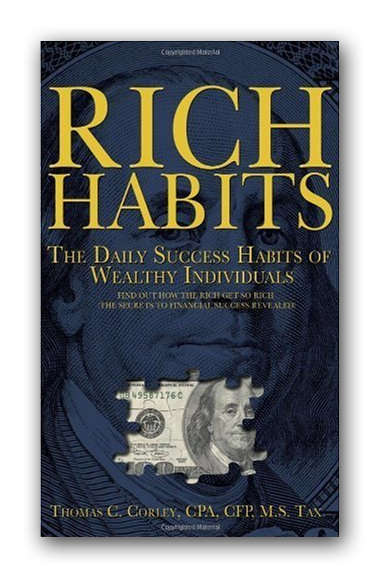
In my book, Change Your Habits Change Your Life, I introduced my readers to one of the tools successful entrepreneurs in my Rich Habits Study used that helped transform them from ordinary individuals into self-made millionaires. This tool is something called Dream-Setting.
Dream-Setting is a process in which you:
- Define your ideal, future life, via a script of 1,000 words or more. In this script, you go out into the future five or more years and paint a picture with words of every facet of your ideal, future life. The home you own, the neighborhood you live in, the income you earn, the money you accumulate, the car you drive, the amazing people who are your closest friends, the places in the world you travel to, etc.
- Bullet point each dream within your script.
- Build goals around each dream.
- Pursue each goal until it is achieved.
As you realize each dream, you climb your individual Dream Ladder. When you reach the top of your ladder, only then are you living the life of your dreams.
Clearly, the hardest part of this Dream-Setting process is pursuing and achieving the goals behind your dream, or the Goal Pursuit & Achievement Process (step #4), imbedded within this Dream-Setting Process.
Step #4’s Goal Pursuit & Achievement Process is the hardest part because it requires that you:
- Develop the knowledge and skills which enable you to pursue each goal and
- Take action on each goal.
Each of these two Goal Pursuit & Achievement Processes, requires effort. Effort = Time. Somehow, you must find the time to pursue and achieve the goals behind your dreams.
What makes devoting time to your goals so hard, is that many who are pursuing their dreams and the goals behind their dreams, have jobs which limit how much time they have to engage in this Goal Pursuit and Achievement Process.
So, what do you do?
You must create a daily routine in which you block off time, every day, to dedicate to this Goal Pursuit & Achievement Process.
This routine can be as little as one hour a day. What makes this routine so effective, is when you habitualize it, meaning, when you transform it into a daily habit. You need to create a daily habitual routine in which you, day after day, go at each one of your goals.
Your daily routine = the scheduling system that transforms each of your dreams, and the goals behind your dreams, into reality.
This is why I harp so much on habits. Daily habits, built around your goals, make success possible.
Your daily routine is nothing more than a series of daily habits you engage in every day that enable you to achieve each one of your goals and ultimately, each one of your dreams.
Let me give you a real-life example.
When I began my Rich Habits Study in early 2004, I had just taken over as CEO of my company. I had responsibility for eight employees and close to one thousand clients. This new job required an enormous commitment of my time, meaning long hours. I also had three young children and a spouse I desperately wanted to spend time with.
So, I found the only time available – 4:30 am – 6am on workdays and 4:30am – 8am on weekends. For nearly four years, my daily routine was waking up at 4:30am and devoting time to my Rich Habits Study. Because I only had that limited time, the study took four years. But, after four years, it was done.
Since then, I continued to employ this daily morning routine to help me write five books over a seven year period. Like so many of the self-made millionaires in my Rich Habits Study, a simple daily routine helped transform me from a nobody into a world-wide bestselling author, in a relatively short period of time.
If you are pursuing a dream and time is your enemy, you must create a routine and then you must habitualize that routine – schedule it every day. This is what successful high achieving dreamers do. That is what the self-made millionaires in my Rich Habits Study did. They created and followed a consistent schedule, or daily routine.
Consistency transforms dreams into reality. The tool to create consistency, is your daily routine.










